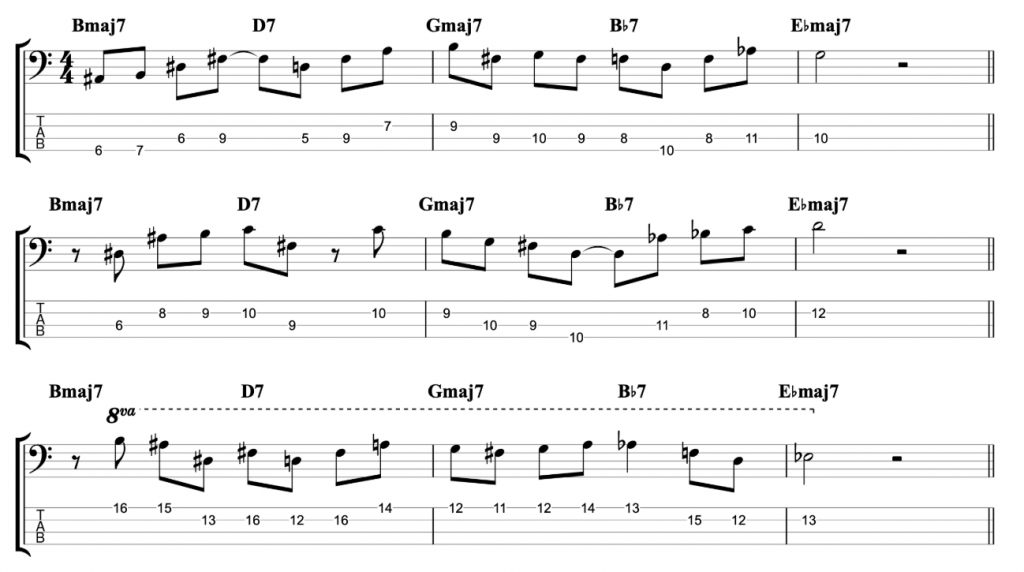How to Improvise on Giant Steps – Bass Practice Diary – 9th April 2019
Last week I posted a video of me practicing improvising on Giant Steps chord changes on fretless and fretted bass. So this week I want to talk a bit about my approach to playing on what are some of the most notoriously difficult chords changes in jazz.
Having said that, I don’t think that soloing on Giant Steps needs to be very difficult. As long as you start slowly and focus on internalising the sound of the chords before you increase the tempo.
One of the reasons that John Coltrane’s Giant Steps has it’s fearsome reputation is because of the chord changes in the first two bars. The first bar starts on a Bmaj7 chord for two beats and immediately changes to a D7 chord on beat three. Which is a key change to G major. The second bar starts with a resolution to a Gmaj7 chord. Then it changes key again. This time to Bb7 on beat three which is the fifth of Eb major.
So the tune starts with three different keys in two bars. Needless to say, if you’re not prepared for it, it will catch you out. And many Giant Steps solos have failed before they’ve begun because musicians can’t negotiate these quick key changes quickly enough.
This chord movement in bars 1 and 2 repeats itself in bars 5 and 6 but transposed so that the progression starts on Gmaj7. And it’s this chord progression that defines Giant Steps. So if you want to improvise on Giant Steps you need to spend some time really working on this two bar chord progression.
Use the Chord Tones
My first piece of advice would be to come up with lines over this two bar progression using chord tones. The progression itself is already complex enough on it’s own that you don’t need to add lots of chromaticism or substitutions to make your lines sound interesting. It’s amazing how many interesting sounding jazz lines you can come up with on Giant Steps using nothing but roots, 3rds, 5ths and 7ths.
Here are three different lines that I came up with which use nothing but chord tones.

You can transpose each of these to work over bars 5 and 6. But here’s another one that I wrote specifically to be played over bars 5-7.

I don’t work out these licks so that I can play them in a solo. I do it to help me get the sound of the chord changes into my ears. And the more lines like this that I work out, the more likely I’ll be to be able to improvise something like this in a solo. So feel free to play through my licks and practice them, but also come up with some of your own.
I honestly feel that this two-bar chord progression is the key to unlocking Giant Steps. Once you can improvise over this tricky chord sequence, the rest of the progression is easy, dare I say it. It’s just a sequence of II – V – I’s in three different keys. Eb major, G major and B major.
Playing on II – V – I’s is a jazz musicians bread and butter. There are hundreds of lessons and videos out there about playing on them.

